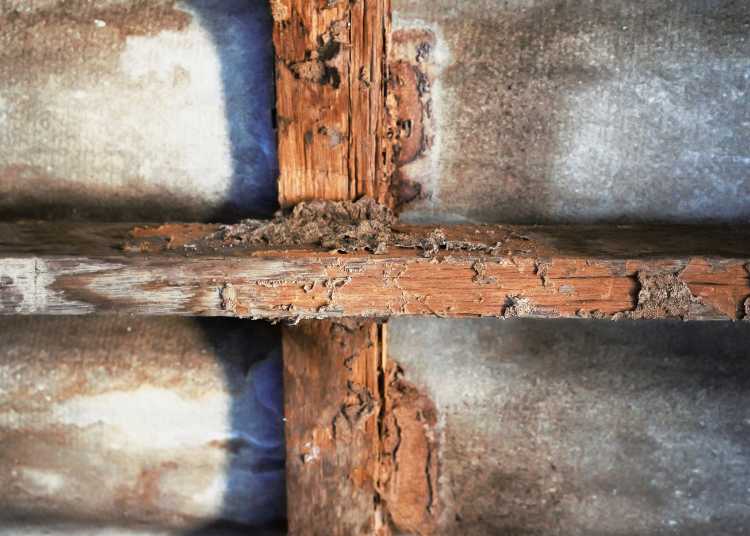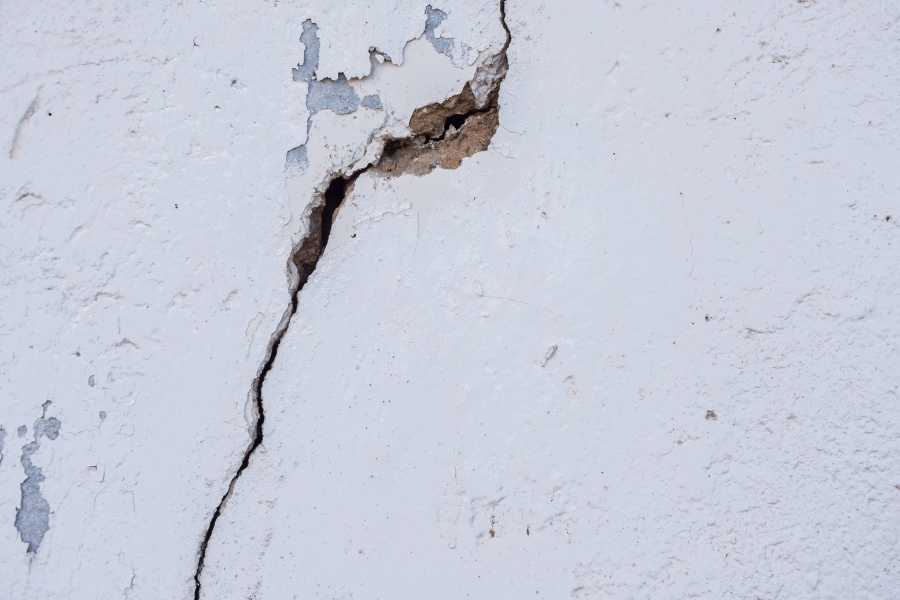Defects are an unfortunate reality of the construction industry, which can significantly impact a project’s budget, program, and quality. These defects, such as concrete cold joints, can also affect structural integrity, functionality, and aesthetics.
From a commercial and legal perspective, defects are typically divided into two major categories: patent and latent. But what is the difference between them?
While a patent defect is an obvious problem that is easily spotted during routine and visual checks (i.e. concrete honeycombs), latent defects are usually hidden issues that cannot be visually seen (i.e. cracking in foundations) and are only identified through tests and professional inspections.
In this post, we will explore these categories a bit further and bring further examples, quickly review dilapidation reports and defects liability period – keep reading it.
What is a latent defect?
In the construction context, a Latent Defect is a concealed or hidden issue within a property/asset that is not immediately apparent during a routine inspection or examination.
These defects are often not visible to the naked eye and may remain dormant for a significant period, making them challenging to detect without specialized knowledge or equipment.
Some of the key characteristics of latent defects include:
- Hidden Nature: Latent defects are typically concealed from view (i.e. termite infestation), often lurking behind walls, under flooring, or within structural components. They may involve problems within the building’s structure, systems, or materials that are not readily observable.
- Not Observable During Standard Inspection: When potential buyers or inspectors conduct a standard visual inspection of a property, latent defects are unlikely to be identified. This is because they do not display obvious signs or symptoms during the examination.
- Potential for Long Dormancy: Latent defects can exist within a property for an extended period without manifesting any noticeable problems. This dormancy can lead to a false sense of security for property buyers or owners.
Disclosure Challenges: In many jurisdictions, sellers are required to disclose known defects in a property. However, disclosing latent defects can be challenging because even the seller may be unaware of their existence. This can lead to legal disputes if such defects are discovered after the sale.

Latent Defect - Examples
Below are some typical examples of latent defects:
Termite Infestations: Termites can silently damage wooden structures, often remaining hidden until significant damage occurs.
Hidden Plumbing Leaks: Water leaks within walls or under flooring can lead to mold growth and structural deterioration without immediate visible signs.
Foundation Settlement: Slow foundation settlement can cause subtle signs such as hairline cracks in walls or uneven floors, which may not be readily noticeable.
Electrical Wiring Problems: Faulty electrical wiring concealed within walls can pose a fire hazard, but the issue may not be evident during a standard inspection.
Hidden Mold Growth: Mold can develop behind walls or in concealed areas due to moisture issues, and its presence may go unnoticed until it becomes a health concern.
Undetected Roof Leaks: Roof leaks can infiltrate the structure, causing damage that becomes apparent only when structural or cosmetic issues arise.
What is a patent defect?
Conversely to latent issues, a patent defect is a visible issue, flaw, or problem within a property or asset that is straightforwardly identified during a standard inspection or examination.
Some of the key features of patent defects include:
- Visible to the Naked Eye: Patent defects are typically observable with the naked eye during a standard visual inspection (i.e. cracking on walls). They may manifest as clear signs of damage, wear, or deterioration.
- Likely to impact asset valuation: Patent defects can have immediate consequences on a property and asset’s value, safety, or functionality.
Transparency in Disclosure: Sellers are typically obligated to disclose patent defects when selling a property. This transparency ensures that buyers are aware of any visible issues that may affect their decision to purchase.

Patent Defect - Examples
Some examples of patent defects are:
Cracked Walls: Cracks in interior or exterior walls are readily visible and often indicate structural issues, settling, or foundation problems.
Leaking Plumbing Fixtures: Dripping faucets, visible water leaks under sinks, or damaged plumbing fixtures are patent defects requiring immediate attention.
Roof Damage: Missing or damaged roof shingles, visible water stains on ceilings, or sagging roofs are patent defects that signify roof problems.
Broken Windows or Doors: Broken windows or doors, whether due to vandalism, accidents, or wear and tear, are patent defects that are easily noticeable.
Exposed Electrical Issues: Exposed or frayed electrical wiring, malfunctioning outlets, or circuit breakers in disrepair are patent defects with safety implications.
Mold Growth (Visible): Visible mold growth on walls, ceilings, or other surfaces is a patent defect and often indicates an underlying moisture issue.
Difference between a Patent and a Latent Defect - Summary
The table below summarises the differences between patent and latent defects.
Aspect | Patent Defects | Latent Defects |
Visibility | Visible and obvious during standard inspections | Concealed and not apparent during routine inspections |
Disclosure by Sellers | Sellers are generally aware and often obligated to disclose | Sellers may not be aware, making disclosure challenging |
Inspection Requirements | Easily identified without specialized inspections | Typically require specialized inspections or expertise to detect |
Examples | Cracked walls, leaking fixtures, roof damage, broken windows, exposed electrical issues, visible mold growth | Termite infestations, hidden plumbing leaks, foundation settlement, hidden electrical wiring problems, concealed mold growth, undetected roof leaks |
How to identify Latent Defects then?
As discussed above, spotting latent defects can be challenging, and they might require specialized professionals, professional services, and a review of available information to be identified, such as:
- Professional Inspection: Qualified and experienced home inspectors or structural engineers to conduct a thorough property inspection. These professionals are trained to look for hidden issues and use specialized tools to uncover latent defects.
- Review Documentation and Undertake an Asset Due Diligence: It is worth examining any available documentation related to the property or asset, such as past inspection reports, maintenance records, and renovation history. This information may provide clues about previous issues and repairs, as well as details about the structure and materials implemented during the construction phase..
- Consult with Experts: If you notice any suspicious signs or experience problems that seem out of the ordinary, consult with professionals such as plumbers, electricians, pest specialists, or structural and geotechnical engineers. They can perform more in-depth assessments.
- Foundation Investigations: Foundation problems can lead to significant repair costs, and it is one of the most critical latent defects that can be found in a structure. Observe symptoms like uneven floors, doors that don’t close properly, or visible cracks in walls and foundations.
- Understand the Property’s History: Research the property’s history and previous use. Some latent defects may be related to past activities, such as environmental contamination or improper renovations.
- Be Cautious with Older Properties: Older homes are more likely to have latent defects due to wear and tear over time. Extra attention should be given to inspecting hidden areas.
- Check for Water Damage: Be vigilant about signs of water damage, as water-related issues often lead to latent defects. Look for water stains on walls or ceilings, musty odors, or warped flooring, which may indicate hidden leaks.
In case you are in the process of buying or selling a property or an asset, the use of an asset condition report is recommended.
Patent and Latent Defects - FAQ
What is a property condition report?
A property or asset condition report is a formal document that provides a comprehensive assessment of the physical condition of a property/asset, including its structural components, systems, and any defects or potential issues.
It typically used as a tool for buyers, sellers, landlords, and construction professionals to understand and document the property’s condition, and help taking informed decisions on transaction and ensure transparency.
What is a defect liability period (DLP)?
A defect liability period, or DLP, is a specific timeframe defined in a construction contract in which the contractor/builder is responsible for rectifying any defects or issues that arise after a construction project’s completion.
What is a dilapidation report?
A dilapidation report is a comprehensive report that details the existing condition of a property, particularly its structural and cosmetic aspects. Typically, it is prepared by a qualified professional before construction or renovation work begins in the vicinity.
This report serves as a baseline reference to assess any potential damage or changes to neighbouring properties that may arise due to the construction works.













